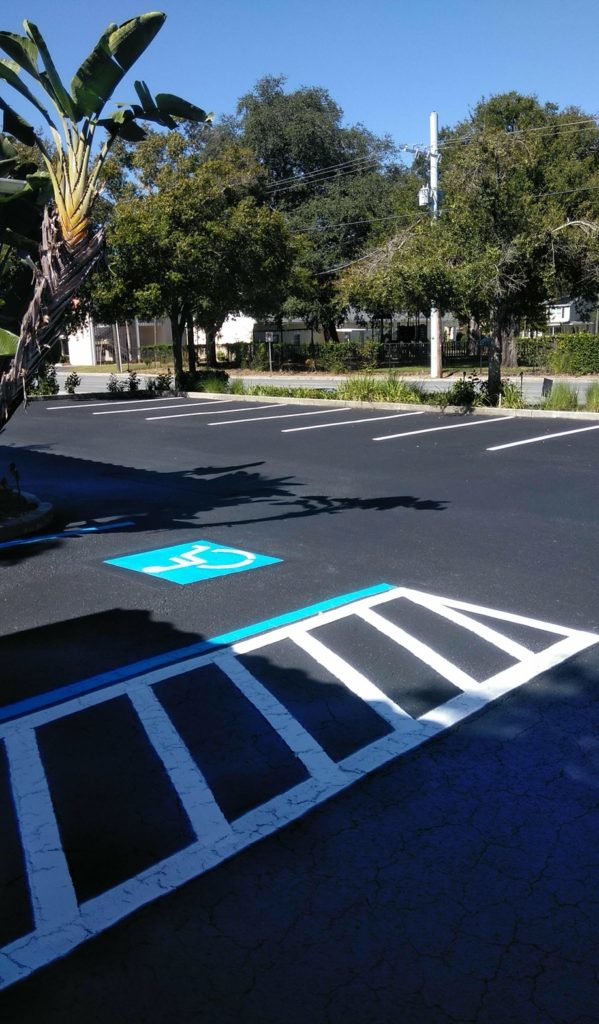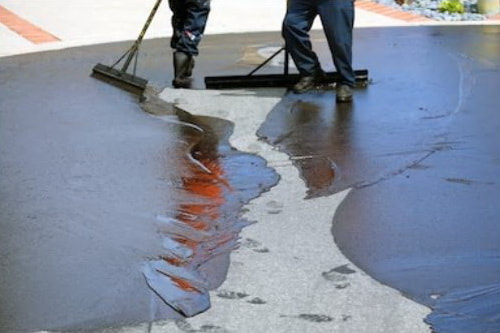Make The Most Of Safety with Angle Parking Areas: Superior Asphalt Sealing
Make The Most Of Safety with Angle Parking Areas: Superior Asphalt Sealing
Blog Article
Cold Mix Asphalt Vs. Hot Mix Asphalt: Which Is Right for You?

Composition Distinctions
Cold mix asphalt is generated by emulsifying the asphalt binder with water and an emulsifying representative before mixing it with aggregate. The hot mix asphalt production process involves heating up the aggregate and asphalt binder independently before combining them at the asphalt plant.
Moreover, cool mix asphalt often tends to be much less thick and extra adaptable than warm mix asphalt. This adaptability makes it much better fit for areas with higher levels of activity, such as driveways or roadways with hefty web traffic. In comparison, warm mix asphalt is known for its high resilience and resistance to rutting and breaking, making it a preferred choice for freeways and high-traffic roadways where durability is important.
Setup Process Differences
The procedure of setting up cold mix and warm mix asphalt shows significant variations in their needs and procedures. Cold mix asphalt, being a more adaptable product, can be applied straight from the bag or container onto the hole or harmed location. It requires marginal preparation work, such as cleaning the area and condensing the chilly mix with hand tools. This makes it a convenient alternative for quick and short-lived repairs. In contrast, warm mix asphalt necessitates an extra fancy installation procedure. It involves heating up the mixture to high temperature levels before laying it down on a properly prepared base. The prep work includes condensing the base, applying a tack layer, and using heavy equipment like pavers and compactors for a smooth and sturdy coating. Because of the home heating requirements, hot mix asphalt installments are usually performed by experts with specialized equipment, guaranteeing an extra permanent and structurally sound result.
Toughness and Long Life Variables
When thinking about asphalt alternatives, longevity and durability are crucial variables to assess for enduring pavement efficiency. Hot mix asphalt (HMA) is understood for its remarkable durability and durability.
In regards to durability, HMA typically outshines CMA due to its remarkable stamina and resistance buildings. HMA pavements have a longer life span, calling for less regular repairs asphalt repair and upkeep, which can translate to set you back financial savings in the future. Furthermore, HMA sidewalks are much more quickly personalized to meet specific project demands, better enhancing their sturdiness.
Price Factors To Consider
Considering the monetary ramifications is a vital facet when evaluating the choice between hot mix asphalt (HMA) and chilly mix asphalt (CMA) for sidewalk tasks. While the initial cost of warm mix asphalt is commonly more than that of cool mix asphalt, HMA frequently offers a much more economical solution over time because of its remarkable toughness and long life. HMA is understood for its capability to stand up to hefty web traffic tons and severe climate condition, decreasing the need for frequent repair work and upkeep. On the various other hand, cold mix asphalt is a lot more inexpensive in advance but might call for even more constant patching and resurfacing, causing higher maintenance prices over time.
In enhancement to material expenses, it's vital to take into consideration the expenditures associated with installation and maintenance when comparing HMA and CMA. Ultimately, the decision between HMA and CMA ought to take into account not just the initial cost but also the long-term financial ramifications to identify the most economical choice for the certain pavement task.
Environmental Influence Contrast
Comparison of the environmental impacts in between warm mix asphalt (HMA) and cool mix asphalt (CMA) discloses distinctive distinctions in sustainability techniques. HMA production calls for high temperatures, leading to enhanced power usage and greenhouse gas exhausts.
Furthermore, using CMA frequently includes reusing existing asphalt sidewalk, advertising resource conservation and decreasing the amount of waste sent out to garbage dumps. This recycling aspect even more enhances the sustainability of CMA contrasted to HMA. In general, when considering the ecological impact, CMA emerges as a much more ecologically lasting option as a result of its reduced power demands, minimized exhausts, and the potential for recycling existing materials. By selecting CMA over HMA, roadway building jobs can contribute positively to environmental preservation initiatives.
Final Thought
In final thought, the option in between cool mix asphalt (CMA) and warm mix asphalt (HMA) relies on different aspects such as structure, setup procedure, longevity, longevity, expense, and environmental influence. asphalt patch repair. While CMA offers a economical and quick remedy for small repair services, HMA ensures premium resilience and longevity for heavy traffic areas. Take into consideration these elements very carefully to establish which kind of asphalt is the appropriate selection for your paving requires

Taking into consideration the monetary implications is a crucial aspect when assessing the selection between hot mix asphalt (HMA) and chilly mix asphalt (CMA) for sidewalk jobs. While the preliminary price of warm mix asphalt is normally greater than that of chilly mix asphalt, HMA frequently offers an extra affordable service in the lengthy run due to its exceptional sturdiness and long life. asphalt patch repair.Contrast of the environmental impacts between hot mix asphalt (HMA) and cold mix asphalt (CMA) discloses distinctive differences in sustainability methods.In final thought, the choice in between chilly mix asphalt (CMA) and warm mix asphalt (HMA) depends on numerous variables such as structure, installation procedure, durability, long life, cost, and environmental effect
Report this page